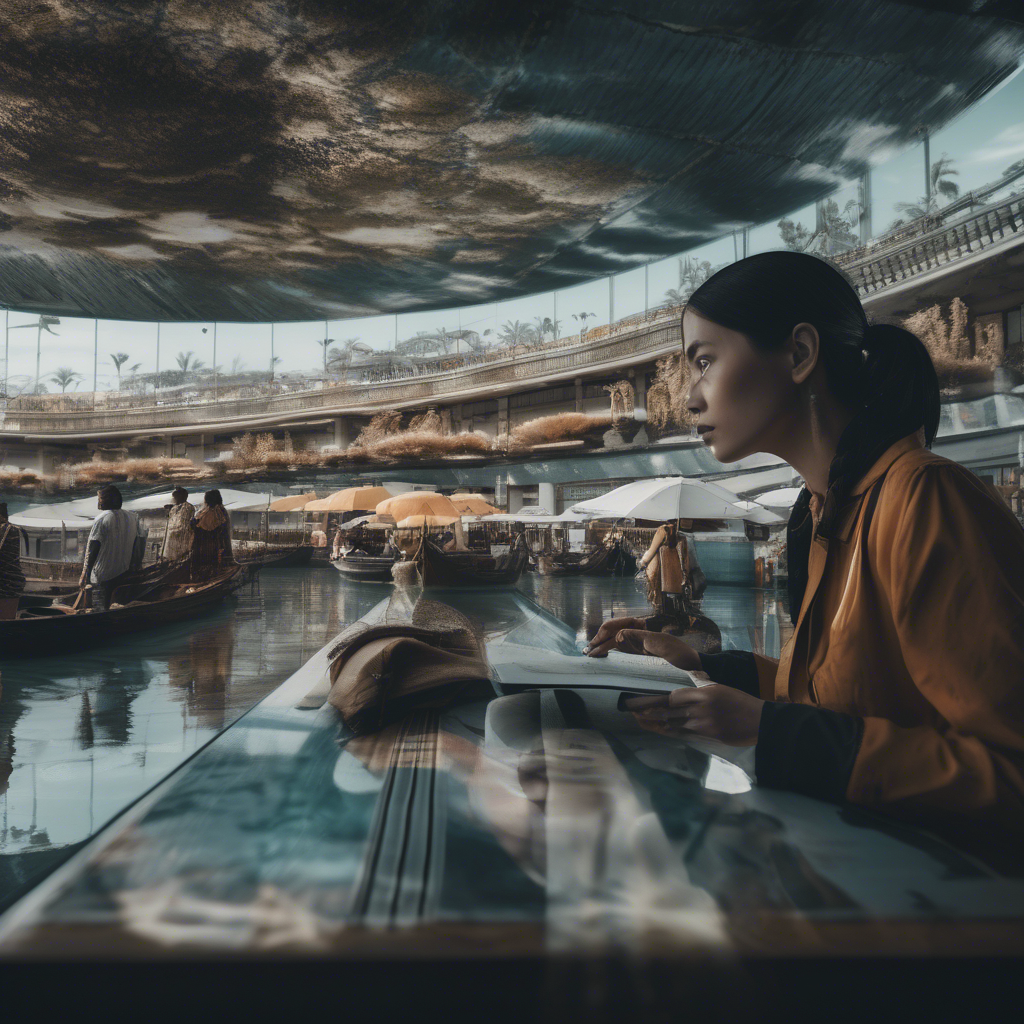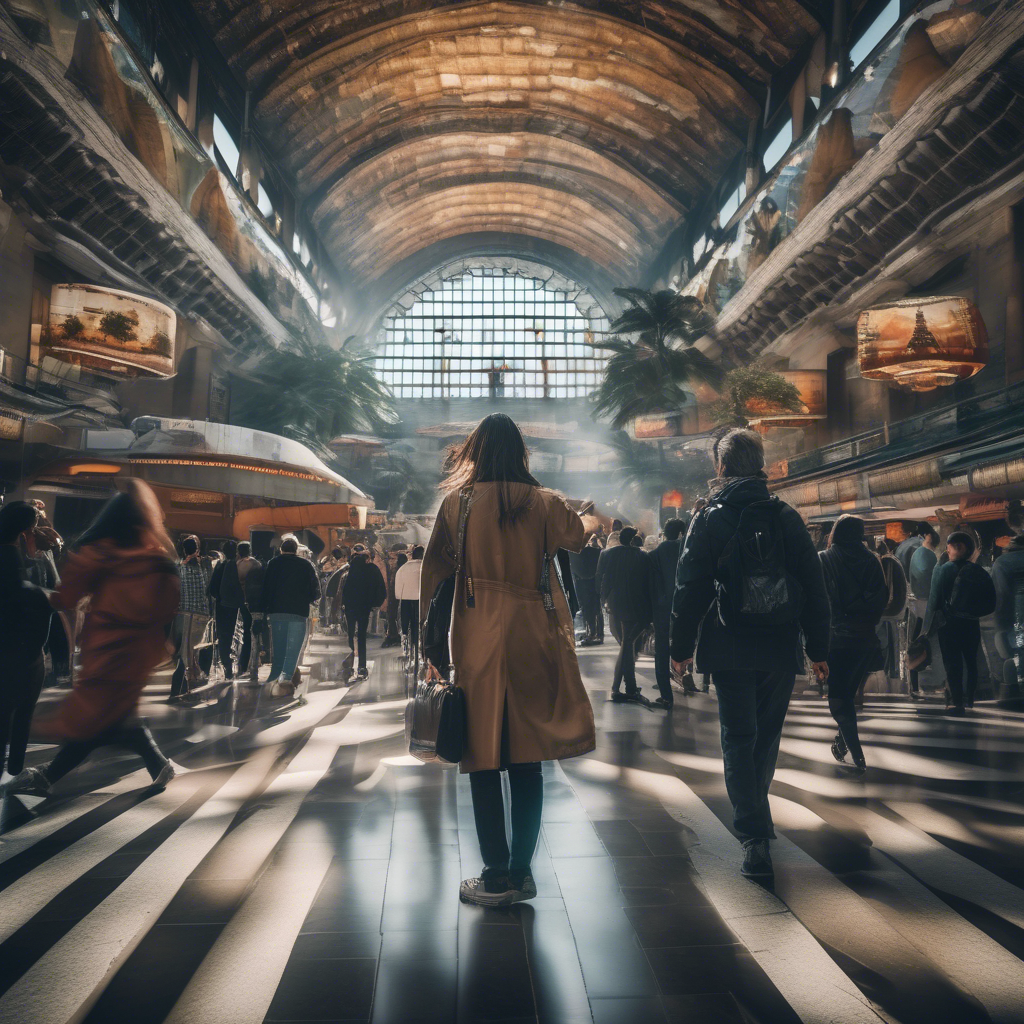Cultural Immersion: How Travel is Evolving in a Post-Pandemic World

As the world emerges from the shadow of the COVID-19 pandemic, travel is experiencing a transformative shift. Gone are the days of merely checking off touristy landmarks; today’s travelers are seeking authentic cultural immersion. This evolution in travel trends highlights a growing desire for deeper connections with local cultures, experiences that go beyond the superficial, and sustainable tourism practices that respect and preserve destinations.
This topic is especially relevant now, as the travel industry is actively adapting to the new normal. Understanding these changes is crucial for travelers seeking meaningful experiences and for industry professionals aiming to meet the evolving expectations of their clientele. In this article, we will explore how travel is evolving post-pandemic by delving into emerging travel trends of 2023, the rise of experiential travel, and the emphasis on sustainable tourism.
Readers will gain insights into how these trends are reshaping global travel experiences and learn practical tips for embracing cultural immersion in their future travels. We will also provide real-world examples and data to illustrate these changes, helping travelers make informed decisions that enrich their journeys.
Emerging Travel Trends in 2023
The year 2023 has marked a significant shift in travel trends, with a focus on personalization and authenticity. Travelers are increasingly interested in exploring ‘fun things to do in my hometown’ and discovering hidden gems that offer a more personalized experience. This change is driven by a desire for travel that feels less commercial and more connected to the local way of life.
One notable trend is the rise of ‘slow travel,’ where tourists spend longer periods in a single destination to truly immerse themselves in the culture. According to a recent survey by Booking.com, 49% of travelers plan to take slower trips to enjoy deeper cultural experiences. This approach allows for meaningful interactions with locals and a greater appreciation of the destination’s unique attributes.
Additionally, digital nomadism is gaining traction, as remote work models allow professionals to blend work and travel. This trend not only supports local economies but also encourages a more sustainable form of tourism. For example, countries like Portugal and Estonia have introduced digital nomad visas to attract long-term visitors who contribute to the local economy while maintaining a low environmental footprint.
The Rise of Experiential Travel
Experiential travel is redefining how people explore new destinations. Instead of traditional sightseeing, travelers are seeking hands-on experiences that allow them to engage with the culture on a deeper level. This shift is evident in the increasing popularity of cooking classes, artisan workshops, and cultural tours that offer insight into local traditions.
For instance, in Japan, tourists can participate in tea ceremonies or take part in traditional craft workshops, providing them with a richer understanding of Japanese culture. Similarly, in Italy, travelers are drawn to vineyard tours and pasta-making classes, offering a taste of local life that goes beyond the typical tourist experience.
Data from the World Travel & Tourism Council indicates that experiential travel is expected to grow by 20% in the next five years. This trend not only enriches the travel experience but also supports local communities by directing tourism dollars towards small businesses and preserving cultural heritage.
Sustainable Tourism and its Impact
Sustainable tourism has become a cornerstone of the travel evolution post-pandemic. As travelers become more conscious of their environmental impact, there is a growing demand for eco-friendly travel options. This includes choosing accommodations that prioritize sustainability, participating in conservation efforts, and supporting businesses that promote ethical practices.
The Global Sustainable Tourism Council reports that 68% of travelers are more likely to choose sustainable travel options than before the pandemic. This shift is evident in the rise of eco-tours, which emphasize wildlife preservation and cultural conservation. For example, in Costa Rica, eco-tourism initiatives focus on protecting biodiversity while educating visitors about the importance of environmental stewardship.
Sustainable tourism not only helps preserve natural and cultural resources but also enhances the travel experience by fostering a deeper connection with the environment and community. By choosing sustainable options, travelers can enjoy a more authentic and responsible journey.
Technology’s Role in Post-Pandemic Travel
Technology is playing a pivotal role in shaping post-pandemic travel trends. From contactless payments to virtual reality tours, technological advancements are enhancing the travel experience and ensuring safety. Virtual experiences, for example, offer a taste of cultural immersion from the comfort of one’s home, sparking interest and inspiring future travels.
Additionally, travel apps and platforms are providing personalized recommendations based on user preferences, making it easier for travelers to discover unique experiences that align with their interests. These tools streamline the planning process, allowing for spontaneous adventures and curated travel itineraries.
Real-time language translation apps are also breaking down communication barriers, enabling travelers to interact more authentically with locals. By leveraging technology, travelers can enhance their cultural immersion and facilitate meaningful connections, enriching their overall travel experience.
To further explore the evolution of travel and cultural immersion, check out our complementary video content that delves into real-life examples and expert insights. This video will provide a visual perspective on how travelers are adapting and embracing new trends in a post-pandemic world.

Frequently Asked Questions
What is cultural immersion in travel?
Cultural immersion in travel involves engaging deeply with the local culture of a destination. This means participating in local customs, trying traditional foods, and interacting with residents. For example, rather than just visiting a museum, cultural immersion might include attending a local festival or learning a traditional craft.
How has the pandemic affected travel trends?
The pandemic has shifted travel trends towards more meaningful and sustainable experiences. Travelers are now more interested in slow travel, experiential activities, and eco-friendly options. This shift has led to a greater emphasis on cultural immersion and supporting local communities.
What are some examples of sustainable tourism?
Sustainable tourism includes practices that minimize environmental impact and support local economies. Examples include staying in eco-friendly accommodations, participating in conservation projects, and choosing tours that emphasize cultural preservation. A visit to a sustainably managed national park is a practical example of sustainable tourism.
How can technology enhance cultural immersion?
Technology can enhance cultural immersion by providing tools that facilitate deeper engagement with local cultures. Apps that offer language translation or cultural tips help travelers communicate and connect with locals. Additionally, virtual reality experiences can introduce travelers to a destination’s culture before they visit.
Why is experiential travel growing in popularity?
Experiential travel is growing in popularity because it offers travelers unique, hands-on experiences that go beyond traditional sightseeing. This form of travel allows for a deeper connection with the culture and contributes to personal growth. Activities like cooking classes or cultural workshops are popular experiential travel options.
How can I make my travel more sustainable?
To make travel more sustainable, choose eco-friendly accommodations, support local businesses, and minimize waste. Use public transportation or walk when possible to reduce carbon footprint. Engaging with community-based tourism initiatives also helps ensure that tourism benefits local residents.
Conclusion
In conclusion, the post-pandemic world has ushered in a new era of travel focused on cultural immersion, sustainability, and experiential learning. As travelers seek more meaningful connections and authentic experiences, the travel industry is evolving to meet these demands. By embracing these trends, travelers can enjoy richer, more responsible journeys that leave a positive impact on the destinations they visit.
For those looking to explore these new travel paradigms, consider integrating elements of slow travel and experiential activities into your itinerary. Opt for sustainable options that support local economies and preserve cultural heritage. As you plan your next adventure, remember that meaningful travel is about the journey, not just the destination.
If you’re ready to dive deeper into the world of cultural immersion and sustainable travel, start by researching ‘fun things to do in my hometown’ to practice local exploration. Expand your horizons by incorporating these insights into future global travel experiences for a truly transformative journey.
Further Reading
- Exploring the Benefits of Slow Travel
- Top Sustainable Tourism Practices for Global Travelers
- How to Plan Your Next Experiential Travel Adventure




